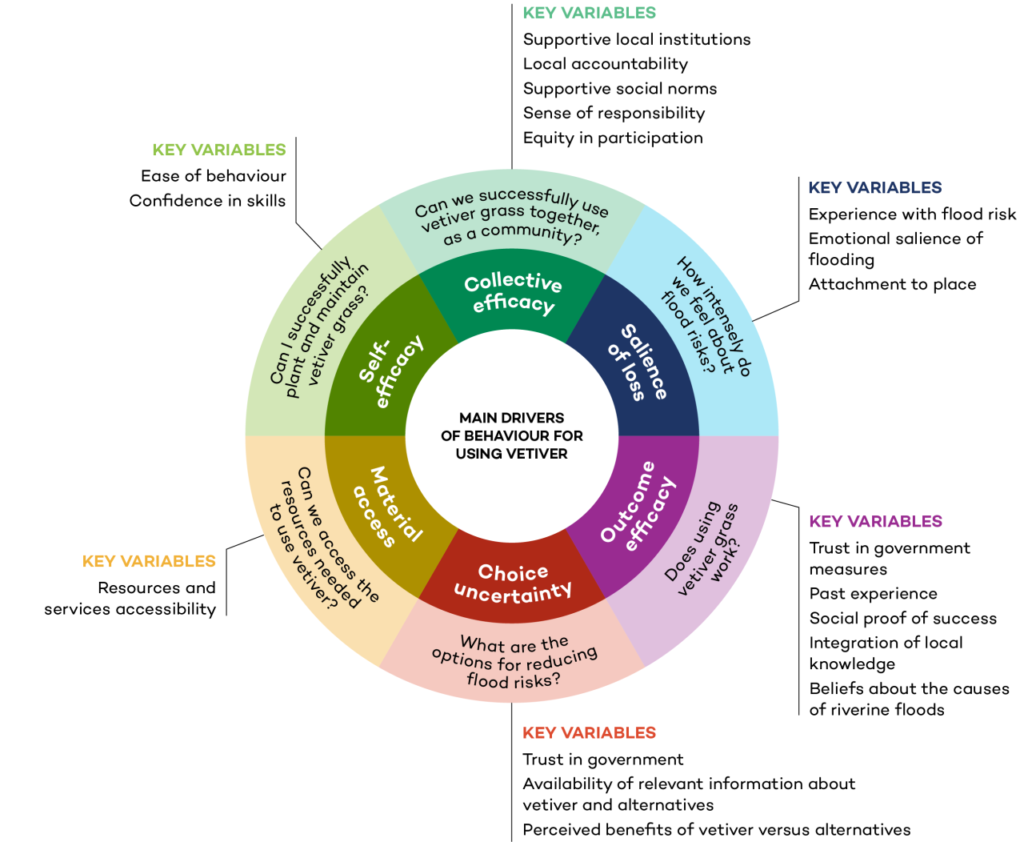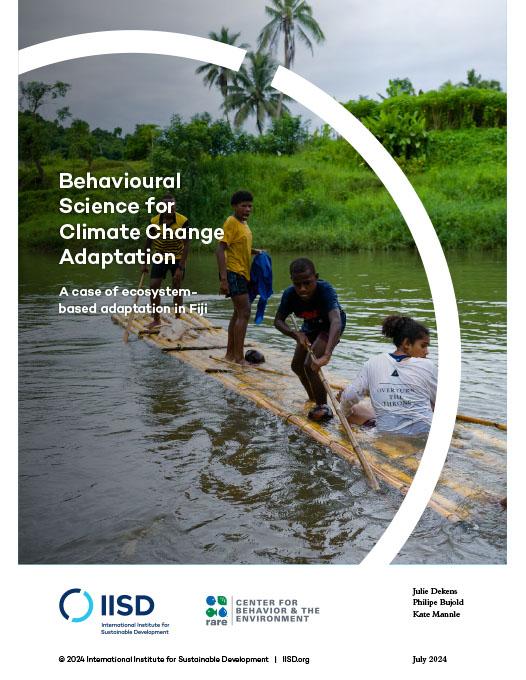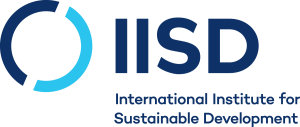Ampliación de la adopción de soluciones AbE mediante un diseño centrado en el comportamiento: el caso del pasto vetiver para el control de la erosión de las riberas de los ríos en Fiji
Información del proyecto
“Plantando para la Resiliencia” es un proyecto que reúne a expertos en adaptación climática de la Instituto Internacional para el Desarrollo Sostenible (IISD), científicos del cambio de comportamiento de Centro de comportamiento y medio ambiente de Rarey funcionarios gubernamentales del Ministerio de Medio Ambiente y Cambio Climático de Fiji.
El objetivo del proyecto era aprovechar los conocimientos de las ciencias del comportamiento para acelerar la adopción de soluciones de adaptación basada en ecosistemas (AbE) entre las comunidades vulnerables de Fiyi. Para ello, se desarrolló un estudio de caso que examinaba el grado de adopción de una solución específica de AbE promovida por el gobierno fiyiano —el uso de vetiver para la rehabilitación de riberas fluviales contra inundaciones— en cuatro comunidades de la provincia de Tailevu y los factores que influyeron en dicha adopción en las comunidades destinatarias.
Logros del proyecto
1. Se realizó una investigación exhaustiva en cuatro aldeas rurales: Se llevó a cabo una serie de entrevistas semiestructuradas en hogares en febrero de 2023, junto con recorridos por las aldeas y mapas participativos, debates en grupos focales con mujeres, hombres y jóvenes, y entrevistas semiestructuradas con expertos a nivel nacional y provincial para comprender las intervenciones pasadas.
2. Análisis del comportamiento de la comunidad utilizando el modelo de impulsores del comportamiento (BDM) de UNCIEF: Se aplicó el marco BDM de 2019 para evaluar los determinantes conductuales que influyen en la adopción del vetiver. El análisis reveló una adopción muy limitada del vetiver en las comunidades seleccionadas.
3. Se identificaron seis variables clave que influyen en las decisiones de los agricultores sobre el uso del vetiver: Basándose en los datos recopilados, el equipo de investigación identificó seis variables fundamentales que parecían influir en el comportamiento de los agricultores en relación con el uso de vetiver contra la erosión de las riberas de los ríos:
- Importancia de la pérdida: Si los aldeanos sienten con intensidad los impactos negativos que la erosión y las inundaciones tienen en sus vidas.
- Incertidumbre en la elección: Si los aldeanos están seguros de las opciones disponibles para reducir la erosión
- Eficacia del resultado: Si los aldeanos creen que la hierba vetiver reducirá con éxito la erosión
- Eficacia colectiva: Si los aldeanos sienten que su comunidad puede plantar y mantener el vetiver para reducir la erosión.
- Autoeficacia: Si los aldeanos sienten que personalmente pueden plantar y mantener con éxito la hierba vetiver para reducir la erosión.
- Acceso al material: Si los aldeanos sienten que pueden acceder fácilmente y costear el vetiver.
Estos factores parecen ser los más importantes actualmente en las comunidades seleccionadas y deberían priorizarse en futuras intervenciones. Cabe destacar que, si bien cada uno de los seis impulsores es fundamental para impulsar la adopción del vetiver, abordar cada variable de forma aislada probablemente no sea suficiente para lograr un cambio sostenido.

Estado del proyecto
Terminado – 30 Mayo de 2024
Métricas clave

IISD
¿Puede la ciencia del comportamiento ayudar a ampliar las soluciones de adaptación al cambio climático?



